The Trump administration has transformed AI governance by rebranding the AI Safety Institute (AISI) into the Center for AI Standards and Innovation (CAISI). This signals a decisive shift from regulatory caution to innovation-driven acceleration. The strategic pivot prioritizes technological breakthroughs and industry-led development, positioning the United States as a global leader in artificial intelligence advancement.
Key Takeaways:
- CAISI replaces mandatory safety reporting with voluntary compliance frameworks
- The new model emphasizes industry innovation over government restrictions
- Reduced regulatory barriers aim to accelerate AI development and deployment
- Standards will be industry-led rather than government-mandated
- The approach seeks to maintain American technological competitiveness globally
I’ve watched this transformation unfold with great interest. As someone who’s built businesses through multiple technological revolutions, I understand both the promise and challenges of AI governance.
The shift from AISI to CAISI represents more than just a name change. It reflects a fundamental rethinking of how government interacts with emerging technologies. Instead of creating hurdles through extensive safety protocols, this approach trusts innovators to develop responsible solutions while moving quickly.
Strange but true: This stands in stark contrast to the European approach that focuses heavily on regulation before innovation. The American model now puts creation first, with guardrails developing alongside advancements.
This reminds me of my experience transforming small businesses into multi-seven-figure successes. The companies that thrived weren’t those with the most restrictions—they were the ones that balanced smart risk-taking with appropriate safeguards.
Let that sink in.
For entrepreneurs and business owners, this shift creates significant opportunities. The reduced regulatory burden means faster development cycles and easier market entry for AI-powered solutions. AI Agents Won’t Replace You—But They Might Change What It Means to Be You.
Here’s the twist: This approach carries both promise and potential pitfalls. While accelerating innovation, we must stay vigilant about ethical implications and unintended consequences. The responsibility shifts more heavily to developers and companies to self-regulate effectively.
Ever felt overwhelmed by the pace of AI advancement? You’re not alone. Many business owners struggle to keep up while ensuring their implementation remains thoughtful and strategic. In my consulting work, I’ve seen how this balance determines which companies thrive in technological transitions.
The good news? This governance shift aligns with what I’ve long advocated for: Transform Your Appointment-Based Business with AI: A Comprehensive Guide. Smart implementation of AI tools can dramatically increase efficiency without sacrificing human connection.
For small business owners specifically, this governance approach creates a more accessible on-ramp to AI adoption. Rather than navigating complex compliance requirements, you can focus on finding the right applications for your specific needs.
But wait – there’s a catch: With reduced formal oversight comes increased responsibility. Businesses must develop their own ethical frameworks and safety protocols rather than simply following government mandates. This self-regulation will separate responsible innovators from those merely chasing profit.
The strategic pivot toward industry-led standards mirrors what I’ve seen work in multiple business contexts. When stakeholders actively participate in creating guidelines, they’re more likely to embrace and champion them. The Power of Blogging in Professional Services Marketing demonstrates how this principle works in content creation as well.
For businesses looking to thrive under this new approach, I recommend:
- Stay informed about emerging industry standards
- Participate in voluntary compliance frameworks
- Develop internal ethical guidelines for AI implementation
- Balance innovation speed with responsible deployment
- Monitor international developments that might impact global operations
The Trump administration’s approach to AI governance represents a calculated bet that American innovation will flourish with fewer constraints. While critics worry about potential risks, supporters highlight the competitive advantage this creates against countries like China that are racing ahead in AI development.
Having worked with businesses across multiple sectors, I’ve consistently found that Walking the Fine Line: Marketing Your Expertise Ethically creates the most sustainable results. The same principle applies here: The most successful AI implementations will balance cutting-edge capabilities with thoughtful deployment.
Industry experts remain divided on this approach. According to CIO Dive, some technology leaders welcome the reduced regulatory burden, while others express concern about potential safety gaps. The NextGov report indicates that international coordination may become more challenging under this new framework.
For businesses determining how to respond, I suggest reviewing What Joe Habscheid’s Clients Have to Say about Him to understand how strategic technology implementation can drive meaningful growth while maintaining ethical standards.
The shift toward voluntary compliance frameworks requires businesses to take greater ownership of their AI deployment strategies. This aligns with my experience helping companies develop internal governance mechanisms that reflect their unique needs and values.
The one digital asset Mark Zuckerberg can’t touch (and why it matters more than ever) highlights why maintaining control over your technological strategy matters now more than ever. As government oversight shifts toward industry leadership, your internal policies become increasingly important.
For entrepreneurs wondering how to navigate this changing landscape, remember that with great freedom comes great responsibility. The businesses that thrive will be those that embrace innovation while establishing their own thoughtful guardrails.
The CAISI approach mirrors successful strategies I’ve implemented with clients: move quickly but thoughtfully, innovate continuously, and establish your own high standards rather than waiting for external mandates. Chris Voss: When Words Become Weapons: Your 3-Step Defense Strategy provides additional insights on navigating complex situations.
This governance transformation reflects a broader pattern in technological advancement—periods of rapid innovation followed by standardization. By emphasizing innovation first, the administration aims to secure American leadership before international standards solidify.
Looking forward, businesses should prepare for continued evolution in this space. While the current approach prioritizes speed and flexibility, future administrations may adjust the balance between innovation and oversight. Developing adaptable internal frameworks will help companies thrive regardless of regulatory changes.
A New Era of AI Governance
Secretary Howard Lutnick dropped a bombshell on June 4, 2025, that sent shockwaves through Silicon Valley and regulatory circles alike. The Commerce Department officially rebranded the AI Safety Institute (AISI) as the Center for AI Standards and Innovation (CAISI), marking a seismic shift in how America approaches artificial intelligence governance.
From Safety-First to Innovation-Forward
The name change isn’t just cosmetic—it signals a complete philosophical overhaul. Where AISI focused on regulatory oversight and risk mitigation, CAISI embraces industry-led innovation as its north star. This pivot reflects the Trump administration’s belief that excessive safety measures were stifling American AI competitiveness on the global stage.
The Commerce Department’s announcement emphasized collaboration over control, promising to work alongside tech companies rather than breathing down their necks. It’s a bet that American ingenuity thrives best when freed from bureaucratic constraints.
What This Means for Tech Innovation
CAISI represents more than bureaucratic reshuffling—it’s a declaration that America won’t let cautious regulations hand China the AI crown. The new center prioritizes establishing standards that accelerate development while maintaining safety as a secondary consideration.
Industry observers note this approach could spark unprecedented innovation cycles, though critics worry about potential oversight gaps. The Commerce Department’s gamble hinges on American companies self-regulating while racing ahead of international competitors.
This shift perfectly aligns with Project Stargate’s massive infrastructure investments, creating a cohesive strategy for AI dominance.
The Paradigm Shift: Safety vs. Innovation
The Trump administration’s pivot from AISI to CAISI represents a fundamental philosophical shift in AI governance. CIO Dive reports this transformation eliminates mandatory compliance frameworks in favor of voluntary industry standards.
Biden’s approach prioritized regulatory oversight and mandatory safety protocols. The new model removes these bureaucratic barriers, betting that innovation flourishes best without government constraints. CAISI’s mission centers on accelerating AI development rather than restricting it.
This shift affects how companies develop AI systems. Previously, firms faced mandatory reporting requirements and safety benchmarks. Now they can self-regulate while accessing government resources for innovation support.
Core Changes in Practice
The policy transformation introduces several immediate changes for AI developers:
- Voluntary compliance replaces mandatory safety reporting
- Reduced regulatory review timelines for AI products
- Industry-led standards development instead of government mandates
- Focus shifts from risk mitigation to breakthrough acceleration
Smart entrepreneurs will adapt quickly to this new regulatory landscape while maintaining responsible development practices.
Stakeholder Dynamics and Collaborative Framework
The new Center for AI Standards and Innovation maintains NIST as its technical oversight authority, preserving institutional knowledge while reshaping operational priorities. This move keeps experienced researchers in place but shifts their focus from safety constraints to innovation acceleration.
Multi-Stakeholder Engagement Strategy
CAISI’s collaborative framework brings together diverse players in the AI ecosystem. The center coordinates between government agencies, private sector developers, academic institutions, and international partners. This approach recognizes that AI innovation can’t happen in silos—it requires constant dialogue between regulators who understand policy implications and technologists who push boundaries.
The framework includes formal agreements with major AI developers and research entities. These partnerships create structured pathways for sharing technical insights while maintaining competitive advantages. Companies get clearer guidance on compliance expectations, while researchers gain access to real-world deployment data.
Public-Private Partnership Model
The partnership model balances government oversight with private sector agility. Here’s how the collaboration works in practice:
- Government provides standardization frameworks and regulatory clarity
- Private companies contribute technical expertise and market insights
- Academic institutions offer independent research and evaluation capabilities
- International partners ensure global compatibility and knowledge sharing
This structure allows CAISI to move faster than traditional government programs while maintaining accountability. The center can tap into Silicon Valley’s innovation speed without losing Washington’s strategic perspective.
The success of this framework depends on trust between stakeholders. Early indicators suggest industry leaders welcome the shift from restrictive safety measures to collaborative innovation standards. This change reflects Trump’s broader philosophy that American AI leadership requires partnership, not just regulation.

Global Context and Competitive Positioning
The Trump administration’s shift to CAISI represents a bold departure from the regulatory-heavy approaches dominating global AI governance. While the EU doubles down on compliance frameworks and China maintains state-controlled development, America’s betting on innovation-first policies to maintain technological supremacy.
Europe’s AI Act creates extensive regulatory hurdles that slow deployment. Chinese AI development operates under strict government oversight, limiting creative breakthroughs. The U.S. now positions itself as the speed lane for AI advancement, where entrepreneurs can build without bureaucratic roadblocks.
Strategic Positioning Elements
This competitive positioning strategy includes several core components:
- Reduced regulatory barriers for AI startups and established companies
- Standards development that promotes innovation over restriction
- International partnerships that preserve American technological sovereignty
- Market-driven approaches that let consumer demand shape AI evolution
Multilateral engagement remains crucial for strengthening U.S. AI leadership globally. However, America’s new approach prioritizes maintaining competitive advantages rather than harmonizing with slower-moving international frameworks.
AI Revolution: Entrepreneurs’ Survival Kit for the New Business Battleground explores how these policy shifts create opportunities for forward-thinking business leaders.
The global AI race isn’t won through caution. Countries that embrace rapid innovation while managing risks intelligently will dominate tomorrow’s economy. America’s CAISI represents a calculated gamble that freedom breeds faster progress than fear-based regulation.
Implementation and Rollout Strategy
The Trump administration isn’t rushing into this transformation blindly. CAISI’s rollout follows a carefully orchestrated timeline that begins in earnest this June 2025.
Phased Transition Timeline
I’ve seen government tech initiatives crash and burn from overly ambitious launch dates. This time feels different. The administration learned from past missteps and chose a gradual approach that gives both regulators and industry players breathing room.
The transition kicks off with voluntary standards—a smart move that acknowledges businesses need flexibility while innovation accelerates. Companies can opt into new frameworks without facing immediate compliance penalties. This approach mirrors successful tech policy implementations I’ve witnessed in other sectors.
Strategic Alignment and Consultation
What catches my attention is how this aligns with broader policy shifts, particularly the recent changes to AI chip export controls. The administration is creating a cohesive tech strategy rather than isolated policy fragments.
Sector-specific consultation processes will address unique industry needs. Here’s what different sectors can expect:
- Healthcare organizations get specialized frameworks for AI-driven diagnostic tools
- Financial services receive targeted guidance for algorithmic trading and risk assessment
- Manufacturing companies access standards for autonomous production systems
- Transportation sectors obtain protocols for self-driving vehicle deployment
The Commerce Department’s announcement suggests these consultations won’t be token gestures. Real industry input will shape implementation timelines and technical requirements.
My experience tells me voluntary standards often become tomorrow’s mandatory compliance requirements. Smart companies will engage early rather than react later. The businesses that participate in these initial consultations gain competitive advantages through insider knowledge of regulatory direction.
Future Outlook and Potential Implications
The CAISI framework’s success hinges on one critical factor: how quickly industry players embrace this innovation-first approach. I’ve watched regulatory shifts before, and the companies that adapt fastest typically secure the biggest competitive advantages.
The Double-Edged Innovation Sword
This policy pivot creates fascinating opportunities alongside legitimate concerns. Here’s what I’m tracking:
- Accelerated Development Cycles: Companies can now prototype and deploy AI solutions without extensive pre-approval processes
- Global Competitiveness: American AI firms gain speed advantages over heavily regulated international competitors
- Investment Attraction: Venture capital flows increase when regulatory barriers decrease
- Safety Trade-offs: Reduced oversight might allow problematic AI applications to reach market faster
The Commerce Department’s rebranding signals a fundamental philosophy change. Instead of preventing AI risks, CAISI focuses on managing them post-deployment.
My biggest concern? This approach demands exceptional industry self-regulation. Companies must balance profit motives with public safety responsibilities – historically a challenging combination.
The framework’s adaptability will prove crucial. Markets move faster than government agencies, so CAISI must evolve continuously. I expect frequent policy adjustments as real-world AI applications reveal unforeseen challenges.
Success metrics remain unclear. How will we measure innovation benefits against potential safety costs? The administration’s approach prioritizes economic growth, but sustainable AI development requires balancing multiple stakeholder interests.
The next 18 months will determine whether this innovation-centric strategy delivers promised breakthroughs or creates new problems requiring government intervention.

Sources:
• CIO Dive
• Nextgov
• Nasdaq
• ETC Entric
• Information Technology Industry Council (ITIC)








